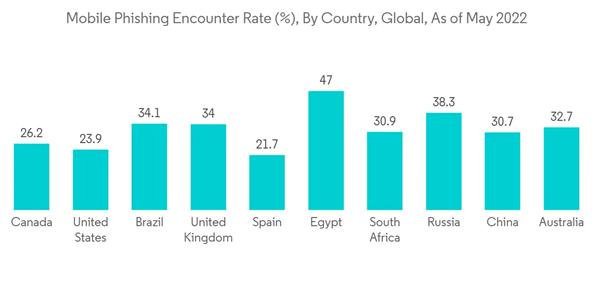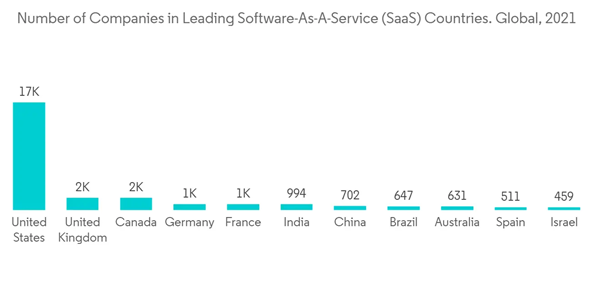The Canada Cybersecurity Market size is estimated at USD 12.96 billion in 2024, and is expected to reach USD 21.83 billion by 2029, growing at a CAGR of 10.99% during the forecast period (2024-2029).
The market is evolving with the increasing digitalization trends in different sectors of private and public domains. New reforms to safeguard the data and operations due to increasing cyber-attacks are shaping the market, encouraging more companies to offer cybersecurity-as-a-service.
This product will be delivered within 2 business days.
The market is evolving with the increasing digitalization trends in different sectors of private and public domains. New reforms to safeguard the data and operations due to increasing cyber-attacks are shaping the market, encouraging more companies to offer cybersecurity-as-a-service.
Key Highlights
- Canada is welcoming different technologies like 5G to upgrade its existing networking infrastructure. This paves the way for digitalization at a larger scale, increasing data processing and, in turn, the vulnerability that follows with it. Hence, the market witnessed several new entrants offering services to support the movement for businesses of all sizes.
- The frequency of cyber-attacks has increased in the past few years, given the evolving global economic and geopolitical conditions. For instance, Sophos State of Ransomeware Report 2021 shows that around 39% of Canadian firms dealt with ransomware in 2021. The report also highlighted that 65% of the survey respondents, who were unaffected by the attacks, expect a ransomware attack in the future. Such conditions create high demand for cybersecurity in the country.
- However, the market suffers from the lack of skilled professionals for cybersecurity in Canada. For instance, according to the 2021 Cybersecurity Workforce Study by ISC2, the cybersecurity workforce in Canada accounted for 123,969, compared to 1,142,462 professionals in the U.S. and 300,087 in the U.K. This highlights the lack of skilled workforce, creating significant demand for more professionals to support the market.
- Meanwhile, the COVID-19 pandemic created hurdles for lawmakers and businesses to cope with the sudden change in the market and business patterns. For instance, in June 2022, according to cbc.ca, the Newfoundland and Labrador Center for Health Information blamed the pandemic for the delay of three years, still not ready with the cybersecurity framework. Small businesses of all sizes shifted online, making their operations vulnerable to cyber security threats. This also fastened the demand and growth of the market.
Canada Cybersecurity Market Trends
Government Policies to Dominate the Market Growth
- The Canadian government has been active lately in upgrading cybersecurity capabilities in the country. Several measures have been taken to bolster the growth of cybersecurity and benefit the economy. This includes investments, upgraded regulatory norms for existing and new businesses for digital transformation, and other measures shaping Canada's cybersecurity ecosystem.
- One of the key obstructions in the development of cyber security in Canada has been the lack of skilled professionals. The Canadian government has been investing in developing new talent to join the field to address the same. The growing economy is well supported by adopting AI and other new-age technologies, which requires coordination among private and public sectors to develop the market. The government facilitates the same through schemes and committees to mediate strategic developments.
- For instance, according to canada.ca, in February 2022, the government of Canada allocated CAD 80 million to National Cybersecurity Consortium (NCC) to lead the Cyber Security Innovation Network (CSIN). The program will leverage Canada's network of academia, not-for-profit, private, and other sectors to enhance commercialization, research, and development and develop skilled cyber security talent.
- Similarly, the government constantly updates the regulations to strengthen and influence the country's cybersecurity. For instance, in June 2022, the Canadian government introduced Bill C-26, An Act Respecting Cyber Security (ARCS), a legislative proposal to amend Telecommunications Act, bringing it in line with other sectors. The legislation also introduced the Critical Cyber Systems Protection Act (CCSPA) to secure Canada's critical infrastructure and help organizations better prepare, prevent, and respond to cyber incidents.
Cloud Security to Have a Major Share in the Market
- The development of cloud platforms and digitalization leveraging cloud technology has made it important for Canadian companies to address the vulnerabilities it brings to businesses. Hence, businesses and organizations opt for cloud security services offered by the companies. The rising digitalization requires a resilient cloud security layer to ensure secure and informed service access.
- The development of the cloud infrastructure and coverage of different services helps businesses expand according to the regulations led by the enforcement agencies. For instance, in September 2021, according to aws.amazom.com, the Canadian Centre for Cyber Security (CCCS) added more Amazon Web Services (AWS) services, making a total of 120 AWS services covered under the assessment of the AWS Canada (Central) Region. This assures customers to use AWS, with more confidence of more AWS services meeting the Government of Canada's security control requirements.
- Further, in September 2021, according to a survey by IBM Corporation, 81% of the respondents, including business and government IT decision-makers, agreed that the federal government needed to increase technology/cloud modernization spending. They expect it to help overcome the disruptions caused by the COVID-19 pandemic. Cloud infrastructure development would surely attract large-scale digitalization, requiring cloud security.
- Similarly, companies partner to provide better services to the clients by sharing expertise and resources, developing the cloud security ecosystem in Canada. For instance, in July 2022, Think On, Inc. announced a technology partnership with Lorica Cybersecurity to introduce next-generation encrypted data analytics solutions on the ThinkOn cloud computing platform. The partnership aims to deliver solutions aligned with ThinkOn's priorities, including privacy, security, and data sovereignty in the cloud.
- Also, the development of Cloud facilities in the country is helping in the all-around development of the cloud ecosystem, strengthening the overall market for cloud security too. For instance, in September 2021, Google Cloud opened a new cloud region in Toronto, Canada. The rising demand for Software-as-a-Service (SaaS) companies leveraging the cloud infrastructure also demands stringent cloud security, creating high service demands.
Canada Cybersecurity Industry Overview
The Canadian cybersecurity market is highly fragmented, with intense competition among the major players. The increasing cyber-attacks motivate companies to plan strategies and additions to their existing service line-ups. Companies and organizations are coming together to introduce useful and specialized courses to upskill talent and employees to address the lack of skilled cybersecurity professionals. The market also witnesses acquisitions and partnerships as strategic moves to provide improved cybersecurity solutions.- June 2022 - Proofpoint Inc announced product integration between Okta and CASB solution, enabling customers to detect and remediate suspicious logins, including more than 7,000 cloud applications operated through Okta Identity Cloud. This also covers cloud applications federated to Microsoft Active Directory and Google, catering to the enterprises' major cloud needs and assuring secure logins.
- May 2022 - Check Point Software Technologies Ltd. declared the availability of cyber protection against mobile-related threats, introducing a new version of Harmony Mobile. The improved version prevents the download of malicious files, with additional security capabilities, like advanced mitigation capabilities on Samsung devices, operating system vulnerability assessment, easy-to-manage HTTPS inspection, and other features, providing a complete mobile security solution.
Additional Benefits:
- The market estimate (ME) sheet in Excel format
- 3 months of analyst support
This product will be delivered within 2 business days.
Table of Contents
1 INTRODUCTION
4 MARKET INSIGHTS
5 MARKET DYNAMICS
6 MARKET SEGMENTATION
7 COMPETITIVE LANDSCAPE
Methodology

LOADING...










